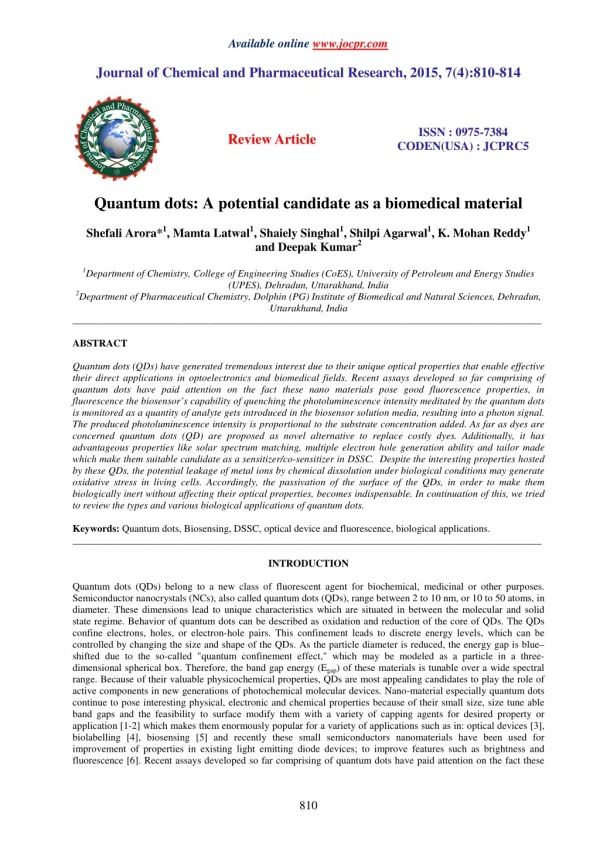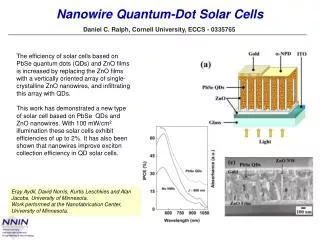Quantum dots: A potential candidate as a biomedical material
Quantum dots (QDs) have generated tremendous interest due to their unique optical properties that enable effective their direct applications in optoelectronics and biomedical fields. Recent assays developed so far comprising of quantum dots have paid attention on the fact these nano materials pose good fluorescence properties, in fluorescence the biosensor’s capability of quenching the photoluminescence intensity meditated by the quantum dots is monitored as a quantity of analyte gets introduced in the biosensor solution media, resulting into a photon signal. The produced photoluminescence intensity is proportional to the substrate concentration added. As far as dyes are concerned quantum dots (QD) are proposed as novel alternative to replace costly dyes. Additionally, it has advantageous properties like solar spectrum matching, multiple electron hole generation ability and tailor made which make them suitable candidate as a sensitizer/co-sensitizer in DSSC. Despite the interesting properties hosted by these QDs, the potential leakage of metal ions by chemical dissolution under biological conditions may generate oxidative stress in living cells. Accordingly, the passivation of the surface of the QDs, in order to make them biologically inert without affecting their optical properties, becomes indispensable. In continuation of this, we tried to review the types and various biological applications of quantum dots.
★
★
★
★
★
85 views • 5 slides









